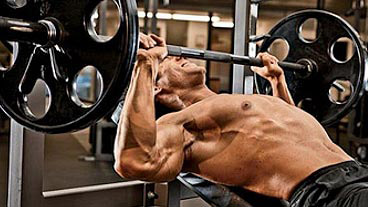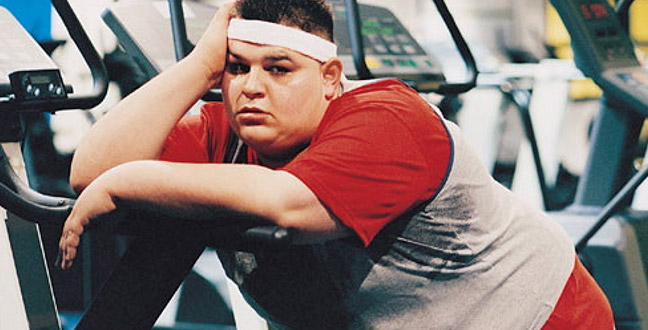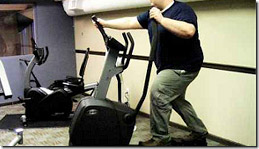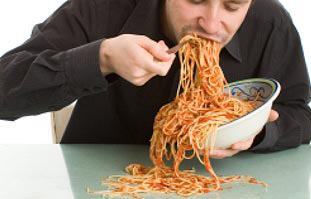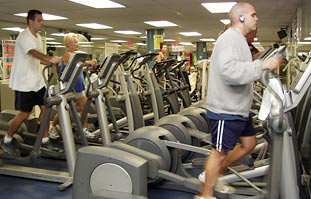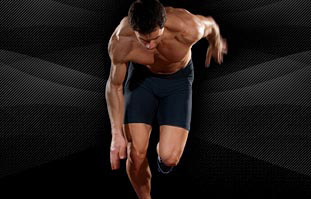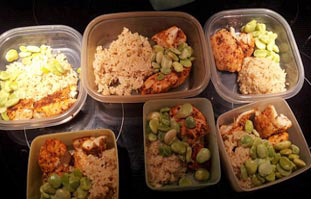The bodybuilding debates will never end. The endless arguments over how an effective muscle building program should be structured will most likely continue until the end of time.
Just scour the Internet message boards, flip through any muscle magazine or talk to the sales rep at your local supplement store. No matter who you talk to or what you read, it seems that everyone is an expert these days.
If everyone is an expert, confident in their own ideas and beliefs, how can the average beginner possibly know who to listen to? He or she is instantly confronted with endless questions that seem to have no clear-cut answer. How many days should I train per week? How many sets should I perform for each muscle group? What type of rep range should I be using? What are the most effective exercises for stimulating muscle growth? How long should my workouts last?
These questions go on and on until he or she is eventually led to believe that building muscle is an infinitely complex process involving rocket-science precision and an intimate understanding of human physiology.
I mean, that’s what takes to build muscle, right? Wrong!
Believe me, there are answers to these important questions, and if you are willing to put in the time and effort you will most definitely find them.
But that’s not what this article is about.
You see, amidst all of the confusion and endless debating, the majority of lifters end up losing sight of the big picture. Beyond all of the specific workout principles, such as rep range and exercise selection, remains one crucial principle, a principle that lies at the very heart of the muscle growth process.
If this principle is not given full attention, or even worse, completely ignored, building muscle becomes next to impossible. The bottom line is that muscles grow as they adapt to stress.
When you go to the gym and lift weights, you create “micro-tears”
within the muscle tissue. Your body perceives this as a potential threat to its survival and reacts accordingly by increasing the size and strength of the muscle fibers in order to protect against a possible future “attack”. Therefore, in order to continually increase the size and strength of the muscles, you must focus on progressing each week by either lifting slightly more weight or performing an extra rep or two. In doing this, your body will continue to adapt and grow to the ever-increasing stress.
Building muscle is all about building strength.
So what is the most powerful muscle-building tool available? Quite simply, it is a pen and a piece of paper!
Every time you go to the gym you must write down exactly what you accomplished and then strive to improve upon it the following week. If you aren’t always getting better, then you’re either staying the same or getting worse.
Every week you should have an exact plan of attack ready to be executed. You absolutely cannot afford to start throwing weights around aimlessly without a clear-cut goal in mind.
The specifics of building muscle are important to understand and implement, but regardless of what style of training you’re currently using the ultimate deciding factor between success and failure is progression. You can sit around all day obsessing over specific principles, but the bottom line is that if you aren’t getting stronger every week, you absolutely will not be getting any bigger. Examine your training approach closely. If you haven’t been paying laser-like attention to the amount of weight you’ve been using, the number of reps you’ve been performing, and then striving with every ounce of your energy to improve upon those numbers each week, you are completely ignoring the very foundation of the muscle growth process. If you want to see the best gains in muscle mass and strength that you possibly can, a pen and a piece of paper is the most important tool you could possibly have in your arsenal. |
Monday, 29 May 2017
body muscles the best tool
Labels:
abs,
body muscles,
build ab,
fitness,
get abs,
get pecs,
muscular body
Tuesday, 23 May 2017
cardio exercise a scientific look
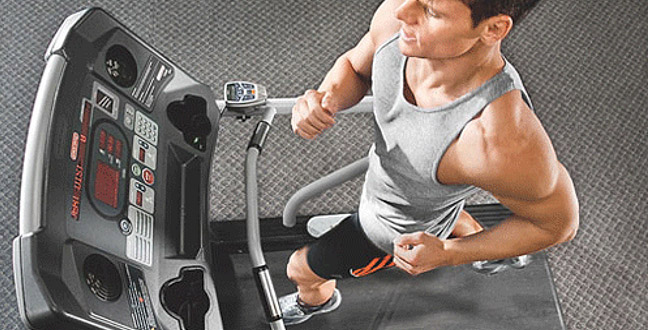 Performing cardio on an empty stomach (usually first thing in the morning after an overnight fast) has been a popular fat burning strategy among bodybuilders for many years.
It seems to make sense…
Since there is no food in the stomach, and since glycogen levels are low, the body will be forced to utilize more body fat for energy during the session. As a result, you’ll lose fat faster. But just like the “eat protein every 3 hours” rule, the post workout shake obsession and the “eat clean 24/7” approach, fasted cardio appears to be yet another piece of traditional bodybuilding advice that comes up short. Although this ultimately a highly complicated issue, let’s go over the key points… First off, the body is a far more intricate and dynamic system than most of us could ever imagine. Its specific use of fuel during exercise is constantly changing and is affected by a ton of different internal factors, such as different hormones and enzymes. The attempt to burn greater amounts of fat by exercising on an empty stomach is an extremely simplistic approach to a far more complex overall picture. Secondly, worrying about what happens in small spans of 30-60 minutes is an incredibly short-sighted view of fat loss. The process of losing fat is all about the big picture and what you do over the course of several days (not hours) is what’s really important.
For example, it appears that if more carbohydrates are burned during exercise, you’ll simply end up burning more fat later on in the day.
In the same way, if you burn more fat during exercise, more carbohydrates are burned later on. In other words, looking at overall 24 hour energy expenditure seems to be the most important factor by far. Thirdly, cardio on an empty stomach doesn’t appear to burn more total fat in comparison to having a meal first. Fasted cardio does appear to increase lipolysis (the amount of fat that is broken down), but does not increase fat oxidation (the amount of fat burned). In other words, fasted cardio causes the body to break down more fat than it can actually use for energy. And when it comes to fat loss, the limiting factor is fat oxidation, NOT lipolysis. In the end, those fatty acids that aren’t used for fuel are simply re-stored as body fat. Fourth, a pre-cardio meal increases the thermic effect of exercise. Not only does fasted cardio have minimal to no direct effect on fat loss, but fed cardio may actually be superior. This is because having a meal first appears to increase post exercise oxygen consumption (EPOC) due to an increase in thermogenesis (calories burned as heat). Fifth, performing cardio in a fasted state reduces exercise intensity. At the end of the day, effective cardio is all about maximizing the total number of calories burned. The more total intensity you generate, the greater the calorie-burning effect will be. In most individuals, performing cardio first thing in the morning on an empty stomach will have a significant negative impact on overall exercise intensity in comparison to having a meal first. Lastly, fasted cardio causes a greater degree of muscle loss. The research has shown that nitrogen losses are nearly doubled when cardio is performed on an empty stomach. If you’re aiming to burn fat while maintaining as much muscle as possible, fasted cardio is probably not the smartest choice.
So, to sum this all up…
Not only does fasted cardio appear to NOT increase fat loss during exercise, but it may actually lower the total amount of fat burned due to a decrease in post exercise oxygen consumption and overall training intensity. In addition, fasted cardio causes you to lose more muscle. Bottom line?
If you’re looking to maximize fat loss while minimizing muscle loss, it’s probably best to get a meal in at least a few hours prior to your cardio sessions.
Fasted cardio does not produce any clear fat burning advantages, and if anything, it may be counterproductive. |
Labels:
. exercise and fitness,
A,
ab exercises,
ab work out,
abs workout,
aerobic exercise,
build muscle protein,
burn ab,
cardio,
cardio fitness,
count calories,
fitness,
IMPROVE FAT LOSS,
physical fitness,
workout
Thursday, 18 May 2017
WHY EXCESSIVE CARDIO CAN ACTUALLY MAKE YOU FATTER
It may seem counterintuitive.
After all, if the ultimate goal of losing fat is to maintain a calorie deficit over time by consistently burning more calories than you consume, how could a calorie-burning tool such as cardio end up working against you?
Well, just take a look around your gym for firsthand evidence. It’s all too common to see those same guys and girls who show up day after day… month after month… even year after year… and still don’t appear to have made any real progress. In many cases, despite sweating on that treadmill, stairstepper or elliptical for literally hundreds of hours combined (in combination with plenty of time in the weightroom), they actually appear to have gained even more body fat than they started out with.
How is this possible? How is it possible that someone could put so much effort into their training program and actually end up travelling farther away from their goals rather than closer to them?
Simple: although the act of performing cardio does burn calories in the short term, it also stimulates your appetite as well. When you combine this with the fact that the majority of people aiming to lose fat do NOT track their daily calorie intake with any real accuracy (they simply wing their diet and “eat healthy” throughout the day), and you end up with a real potential problem. For example, let’s say you performed an hour of cardio 5 days a week, burning 400 calories per session and 2000 calories per week. That’s all fine and good, but what happens if the appetite-stimulating effect of those same 5 sessions caused you to unknowingly consume, for example, an extra 350 calories per day?
By the end of the week, you’d have burned 2000 calories from your cardio sessions, but would have also consumed an additional 2450 calories, for a net gain of 450 calories per week.
Trust me, this can happen much more easily than you think. Small dietary choices that you make throughout the day add up very quickly, and 350 calories really isn’t much. A handful of nuts here… a piece of fruit there… small late-night snack…
If you’re constantly feeling hungry and you aren’t keeping track of your daily calorie intake, there’s an almost certain chance you’ll over-eat.
Cardio is not the only culprit here either; weight training or any other form of exercise will also have appetite-stimulating effects as well. And the simple reality is this: it absolutely does not matter how “healthy” your diet is or whether you’re eating nothing but plain chicken breast, oatmeal and broccoli all day long… if the total number of calories you consume is equal to or greater than the total number of calories that you burn, you are NOT going to lose an ounce of fat, period. This is known as “the law of energy balance”, and there’s no way around it. In order to lose fat, you must maintain a calorie deficit over time by burning more calories than you consume. Plain and simple. The key is in finding a proper balance between your training program and your diet that allows you to remain in a calorie deficit throughout the week without causing you to feel excessively hungry. So, here are 3 immediate steps you can follow right away to help you in this process… First off, stop over-emphasizing cardio and treating it as the be-all-end-all of fat loss. Cardio is simply one tool in your arsenal to help you burn additional calories, and most people way over-value it. As long as your diet is properly structured, 3-4 cardio sessions per week is easily going to be enough for the vast majority of trainees, and some will do just fine with even less than this. Secondly, include some high intensity interval-based cardio as part of your overall plan. High intensity interval training sessions (or “H.I.I.T” for short) in the range of 8-20 minutes do not stimulate your appetite to the same degree that traditional slow pace cardio does (in some cases it may even blunt your appetite), and while burning more total calories at the same time. However, because this type of cardio is more stressful to your body as a whole, you can only perform so much before you start getting burned out. Aim to perform a balanced mix between these two types of cardio throughout the week. For example, 1-2 aerobic sessions lasting 45-60 minutes and 1-2 H.I.I.T sessions would be a good approach.
Third, start tracking your total calorie intake in more detail.
This is by far the most important step of all.
If you’re just eating “on the fly” throughout the day and don’t have a reasonable idea of how many calories you’re consuming in total, your overall progress will definitely be compromised or even eliminated altogether.
Once you have these 3 steps in place, you can simply test and tweak from there to see what works best for you in terms of maintaining your calorie deficit while managing your overall hunger levels. Some people prefer to create a larger calorie deficit through their diet by reducing their overall food intake and scaling back on the cardio, while others prefer to consume more food throughout the day and burn more of their calories using exercise. |
Labels:
aerobic exercise,
burn body fat,
cardio exercises,
cardio fitness,
cardio workout,
chest training
Tuesday, 9 May 2017
THE TRUTH ABOUT COUNTING CALORIES:
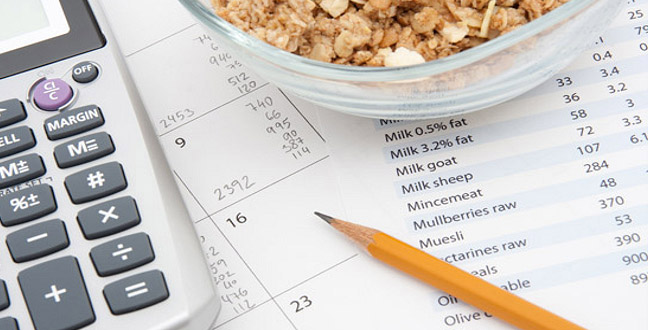
To count or not to count?
The idea of “counting calories” seems like a tedious task. It tends to conjure up negative images of food obsessed individuals revolving their entire day around their diets and tossing individual blueberries onto a food scale in order to meet some perfect daily total.
But is it really necessary to count calories as part of your fat burning or muscle building diet?
Well, it really just depends on what you define as “necessary”.
Is it possible to lose a significant amount of body fat week after week without counting calories? Yes. Is it possible to consistently gain new muscle size and strength without counting calories? Sure. It all comes down to how serious you are about your program, how precise you want your results to be, and what exactly you define as ”counting calories” in the first place.
Let’s go into some more detail here…
Calories are simply a measurement of the total amount of energy contained in the foods you eat. If your goal is to burn fat, you need to create a calorie deficit by burning more calories than you consume. If your goal is to build muscle, you need to create a calorie surplus by consuming more calories than you burn. This is the most foundational, fundamental dietary principle there is and it must be followed if you want to see progress.
It’s not that cut and dry, though. There is also an optimal range that you’ll want to hit in order to achieve the best results.
The figure I typically recommend is a 15-20% deficit for fat loss, and a 15-20% surplus for muscle gain.
If you’re not counting calories in any real way, there’s a decent chance you’ll get the deficit/surplus aspect met (though even this fails in a lot of cases), but a pretty good chance that it won’t be in the optimal range. What are the consequences of this?
Well, if your goal is fat loss, and your deficit is less than 15-20%, you simply won’t lose fat at your maximum potential.
If it’s greater than 15-20%, you’ll still lose fat, but you’ll also lose an excessive amount of lean muscle tissue in the process. If your goal is muscle gain, and your surplus is less than 15-20%, you won’t gain muscle at your maximum potential. If it’s greater than 15-20%, you’ll still gain muscle, but you’ll also gain an excessive amount of fat as well.
Or
b) Maximize muscle gain while minimizing fat gain.
If you simply “wing” your diet, it’s going to be pretty hard, if not impossible to accomplish this.
There are two basic solutions to this…
It’s actually not as difficult as it seems – it just takes a bit of time to initially plan it out.
Secondly, you can estimate. Find your daily nutritional needs, get a good idea of the nutritional content of the foods you typically consume, and then just do your best to stay within the right range without actually tracking every single calorie.
It’s really up to you. It depends how serious you are about your results and how much effort you’re willing to put into your diet.
Option number 1 is obviously going to yield the best possible results, but option 2 can also work decently well with some reasonable focus and discipline. One thing is for sure though: you definitely need some sort of system in place where you understand what your daily calorie/protein/carbohydrate/fat needs are and have a reasonably accurate idea of what you’re taking in through your diet. Otherwise, you’re just shooting darts with a blindfold.
Try to completely “wing” your diet and there’s a very good chance that you’ll be burning fat or building muscle well below your potential (or losing muscle/gaining fat to an excessive degree), or even worse, wasting your time in the gym altogether.
Proper fitness nutrition is not rocket-science, but don’t make the mistake of thinking that calories don’t matter. If you truly want to achieve an impressive, head-turning body, they absolutely do. this here |
Labels:
burn belly fat,
burn calories,
burn fat,
count calories
